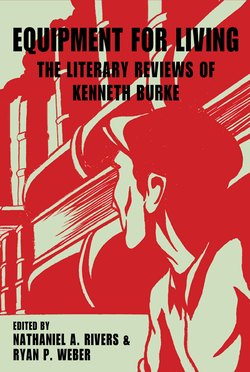Читать книгу Equipment for Living - Kenneth Burke - Страница 39
На сайте Литреса книга снята с продажи.
ОглавлениеRugged Portraiture
Rubicon or The Strikebreaker [film], dir. by Vladimir Vainshtok
The New Masses, April 1934
The story of a marine worker’s conversion to sympathy with the Soviet way of life. The Rubicon to be crossed is the distinction between Bill Parker as a strikebreaker and Bill Parker as a solid member of his class. The parallelisms, contrasting “before” and “after,” suggest somewhat the balance-sheet pattern of Thomas Mann’s early story, Tonio Kröger, though the material is of course profoundly different. In Mann’s story the two contrasted attitudes are Bohemian and bourgeois; in Rubicon they draw the contrast between the worker “on his own” and the worker in his group.
Bill Parker is a stoker who hates his job and finds satisfaction only in the periods of compensatory dissipation which are open to him when his ship is in port. We have here, in outline, the Customary Puritanic swing between drudgery and distraction characteristic of a man whose work lacks group motivation. In any event; Bill has nothing but the freedom of the port town to look forward to. Hence, when he arrives at Havana during a coalheavers’ strike, and is told by the captain that he cannot go ashore “until the boat is coaled, he promptly sets to work with some of the other men heaving the coal into the bunkers. Later we see him ashore, as the reward of his labors. He meets the captain, drunk in a dive—and when the captain taunts him, they get into a fight, with the result that the stoker loses his job and is blacklisted. However, there is a Soviet boat in the harbor—a new hand is needed, and Bill is accepted for the job, the Soviet captain having no objection to a blacklisted man.
In the course of his brawls, Bill had defended himself with a horseshoe. He keeps this horseshoe as a trophy. It becomes the fulcrum of the plot in this wise: On reaching Leningrad, Bill goes to live in an international home for sailors, where he fraternizes with Communist workers and becomes imbued with their attitudes. He has also come into contact with a capitalist lumberman who employs him as an assistant. This lumberman attempts to sabotage a Soviet mill, since he will profit by a time-clause in his contract if delivery is delayed—but Bill recognizes his horseshoe as the implement that did the wrecking, and he exposes his employer.
For contrasted parallels, we have such events as the gluttonous eating of the men on the first ship vs. the gusty eating of those On the Soviet boat; the dissipations under the one way of life vs. the activities in education and sport under the other; dismal living quarters vs. homelike living quarters—and, over all, the horseshoe.
The play has many of those shots of machinery in motion, viewed from peculiar angles and in abrupt sequences, at which the Soviet photographers are particular apt. Again, there are several closeups of individual workers, a tradition of rugged portraiture to which Soviet films have brought a new understanding. There are some quiet skies that are noteworthy, brief studies of turbulent water, and a few very appealing Sheeler-like stills that look up into the well distributed lines of a ship’s rigging.
